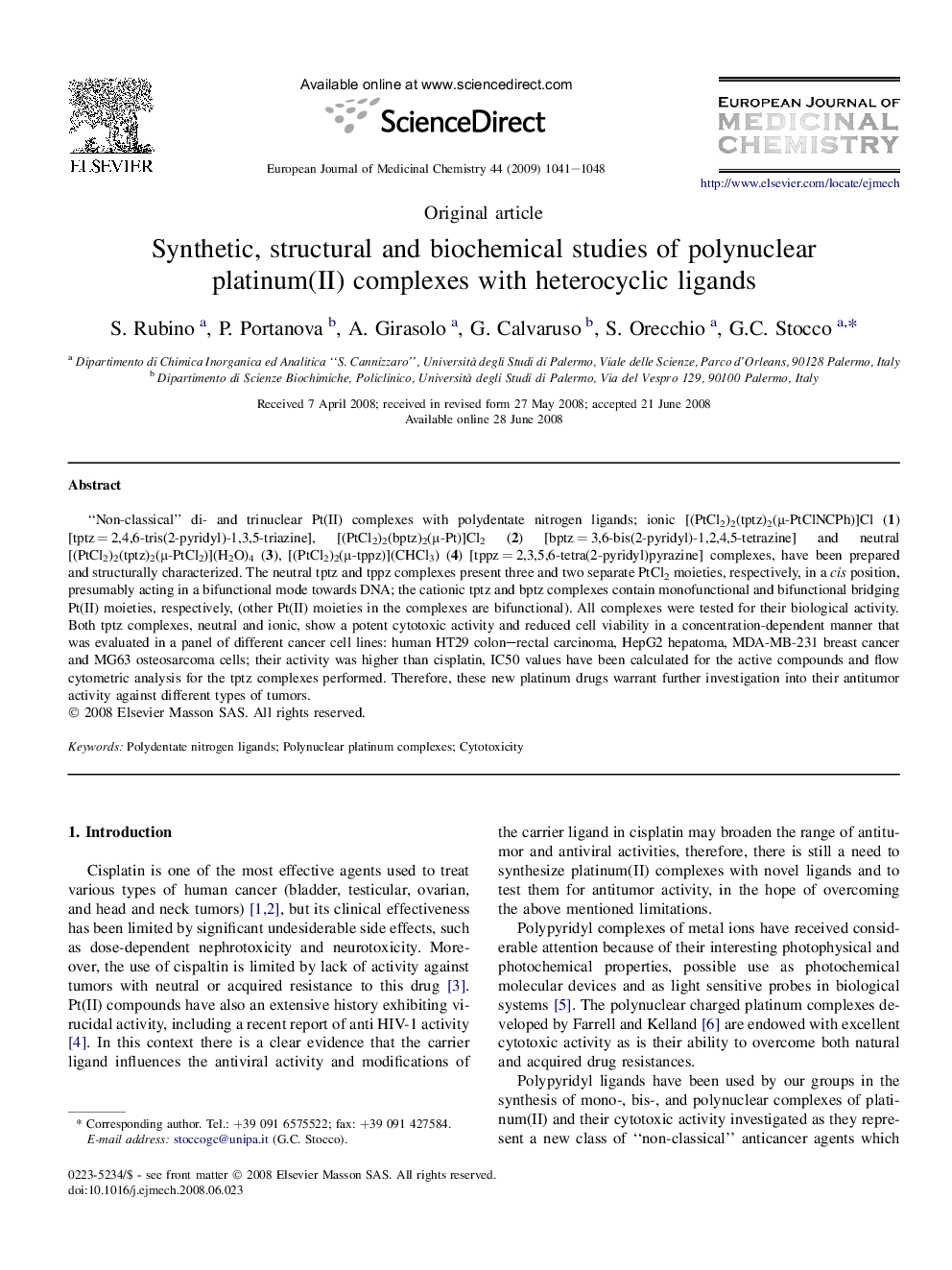| Article ID | Journal | Published Year | Pages | File Type |
|---|---|---|---|---|
| 1393309 | European Journal of Medicinal Chemistry | 2009 | 8 Pages |
“Non-classical” di- and trinuclear Pt(II) complexes with polydentate nitrogen ligands; ionic [(PtCl2)2(tptz)2(μ-PtClNCPh)]Cl (1) [tptz = 2,4,6-tris(2-pyridyl)-1,3,5-triazine], [(PtCl2)2(bptz)2(μ-Pt)]Cl2 (2) [bptz = 3,6-bis(2-pyridyl)-1,2,4,5-tetrazine] and neutral [(PtCl2)2(tptz)2(μ-PtCl2)](H2O)4 (3), [(PtCl2)2(μ-tppz)](CHCl3) (4) [tppz = 2,3,5,6-tetra(2-pyridyl)pyrazine] complexes, have been prepared and structurally characterized. The neutral tptz and tppz complexes present three and two separate PtCl2 moieties, respectively, in a cis position, presumably acting in a bifunctional mode towards DNA; the cationic tptz and bptz complexes contain monofunctional and bifunctional bridging Pt(II) moieties, respectively, (other Pt(II) moieties in the complexes are bifunctional). All complexes were tested for their biological activity. Both tptz complexes, neutral and ionic, show a potent cytotoxic activity and reduced cell viability in a concentration-dependent manner that was evaluated in a panel of different cancer cell lines: human HT29 colon–rectal carcinoma, HepG2 hepatoma, MDA-MB-231 breast cancer and MG63 osteosarcoma cells; their activity was higher than cisplatin, IC50 values have been calculated for the active compounds and flow cytometric analysis for the tptz complexes performed. Therefore, these new platinum drugs warrant further investigation into their antitumor activity against different types of tumors.
Graphical abstractAn array of multinuclear Pt(II) complexes with multidentate heterocyclic ligands is reported. Cytotoxic activity was tested against a panel of four cancer cell lines. Complexes of heterocycle tptz showed a potent cytotoxic activity.Figure optionsDownload full-size imageDownload as PowerPoint slide
